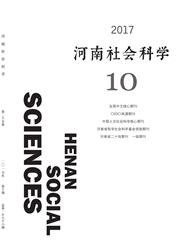

 中文摘要:
中文摘要:
“推-拉”模型对劳动力迁移具有很强的解释力,但它的解释力在中国遇到了挑战。与内地汉族聚居区域省份相比,中国的西部地区的推力更大,但西部地区的劳动力跨省迁移率却明显偏低。仅仅用“推-拉”模型难以解释这种劳动力外迁率偏低的情况。为了克服这个局限,有必要把劳动力来源地的粘力和迁移目的地的斥力纳入迁移模型,从而形成“四因素模型”。它对不同地区、不同族群和不同群体的外迁率的差异,有更强的解释力。
 英文摘要:
英文摘要:
The Push-Pull model has a strong explanatory power on the migration of labor force. However, its explanatory power has met up with challenges in China. Compared with inland provinces of Han communities, western China has greater push but the migration rate of the labor force across provinces in western China is marked lower, which is hard to explain by only applying the Push-Pull model. In order to overcome this limitation, it is necessary to include viscous force of the origins of labor force, and the repulsive force of he migration destination, thus forming a Four-factor model, which has a stronger explanatory power on the difference in the migration rate in different regions, of different ethnic groups and communities.
 同期刊论文项目
同期刊论文项目
 同项目期刊论文
同项目期刊论文
 期刊信息
期刊信息
